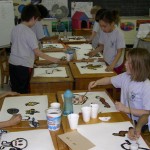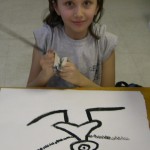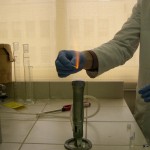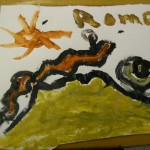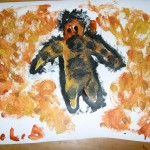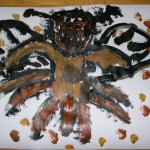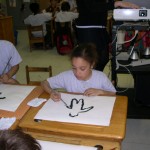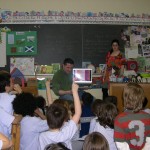Mars
October 6, 2011 in Space
On Wednesday, March 18th, 2009, the Molecules of Life Project blasted off to Mars with Ms Schuster’s 3rd grade class piloted by Concordia University Masters of Art Education student Alexandra Beneteau and Université de Montréal Chemistry Department Post-Doctoral Fellow Tarek Kassem. In a discussion on what we would need to go to Mars, the students were well prepared and knew that the so called “red planet” was composed of iron oxide rocks, similar to those found on earth and that the 4th planet also may possess water. They hypothesized that plants could be grown in the carbon-dioxide rich atmosphere of Mars to produce oxygen by photosynthesis, assuming obstacles such as the colder temperature and lack of a protective atmosphere from the sun’s UV radiation could be surmounted on Mars. Tarek showed the students that they could burn different salts found on Mars using a hot flame to detect their composition, using for examples lithium, sodium, potassium and copper salts which exhibited red, yellow, violet and green colored flames (see: http://chemistry.about.com/library/weekly/aa110401a.htm). Alexandra brought us down to earth yet back in prehistoric times as she explained that the same iron oxide minerals found on Mars were used by cave-people in France to paint pictures of the animals they hunted about 15,000 to 20,000 years ago. The minerals hematite, jarosite and goethite provided respectively pigments for blood red, yellow ochre and brown colors. Painting in the style of the primitive earthlings, who used coal to trace a dark outline of their figures which were filled in using iron oxide pigments, the students used similar pigments, obtained from Mars, to paint cave images of animals that they could imagine might have lived in the harsh climate of Mars.
Thankful for their astrochemical experience, the students thanked MLP Team Mars for taking them on a field trip to the red planet and the caves of France.









